Juho Kanniainen
Variational Graph Convolutional Neural Networks
Jul 02, 2025Abstract:Estimation of model uncertainty can help improve the explainability of Graph Convolutional Networks and the accuracy of the models at the same time. Uncertainty can also be used in critical applications to verify the results of the model by an expert or additional models. In this paper, we propose Variational Neural Network versions of spatial and spatio-temporal Graph Convolutional Networks. We estimate uncertainty in both outputs and layer-wise attentions of the models, which has the potential for improving model explainability. We showcase the benefits of these models in the social trading analysis and the skeleton-based human action recognition tasks on the Finnish board membership, NTU-60, NTU-120 and Kinetics datasets, where we show improvement in model accuracy in addition to estimated model uncertainties.
Learning hidden cascades via classification
May 16, 2025Abstract:The spreading dynamics in social networks are often studied under the assumption that individuals' statuses, whether informed or infected, are fully observable. However, in many real-world situations, such statuses remain unobservable, which is crucial for determining an individual's potential to further spread the infection. While this final status is hidden, intermediate indicators such as symptoms of infection are observable and provide important insights into the spread process. We propose a partial observability-aware Machine Learning framework to learn the characteristics of the spreading model. We term the method Distribution Classification, which utilizes the power of classifiers to infer the underlying transmission dynamics. We evaluate our method on two types of synthetic networks and extend the study to a real-world insider trading network. Results show that the method performs well, especially on complex networks with high cyclic connectivity, supporting its utility in analyzing real-world spreading phenomena where direct observation of individual statuses is not possible.
Time-Series Foundation Model for Value-at-Risk
Oct 15, 2024



Abstract:This study is the first to explore the application of a time-series foundation model for VaR estimation. Foundation models, pre-trained on vast and varied datasets, can be used in a zero-shot setting with relatively minimal data or further improved through finetuning. We compare the performance of Google's model, called TimesFM, against conventional parametric and non-parametric models, including GARCH, Generalized Autoregressive Score (GAS), and empirical quantile estimates, using daily returns from the S\&P 100 index and its constituents over 19 years. Our backtesting results indicate that, in terms of the actual-over-expected ratio, the fine-tuned TimesFM model consistently outperforms traditional methods. Regarding the quantile score loss function, it achieves performance comparable to the best econometric approach, the GAS model. Overall, the foundation model is either the best or among the top performers in forecasting VaR across the 0.01, 0.025, 0.05, and 0.1 VaR levels. We also found that fine-tuning significantly improves the results, and the model should not be used in zero-shot settings. Overall, foundation models can provide completely alternative approaches to traditional econometric methods, yet there are challenges to be tackled.
Forecasting mortality associated emergency department crowding
Oct 10, 2024



Abstract:Emergency department (ED) crowding is a global public health issue that has been repeatedly associated with increased mortality. Predicting future service demand would enable preventative measures aiming to eliminate crowding along with it's detrimental effects. Recent findings in our ED indicate that occupancy ratios exceeding 90% are associated with increased 10-day mortality. In this paper, we aim to predict these crisis periods using retrospective data from a large Nordic ED with a LightGBM model. We provide predictions for the whole ED and individually for it's different operational sections. We demonstrate that afternoon crowding can be predicted at 11 a.m. with an AUC of 0.82 (95% CI 0.78-0.86) and at 8 a.m. with an AUC up to 0.79 (95% CI 0.75-0.83). Consequently we show that forecasting mortality-associated crowding using anonymous administrative data is feasible.
Cryptocurrency Portfolio Optimization by Neural Networks
Oct 02, 2023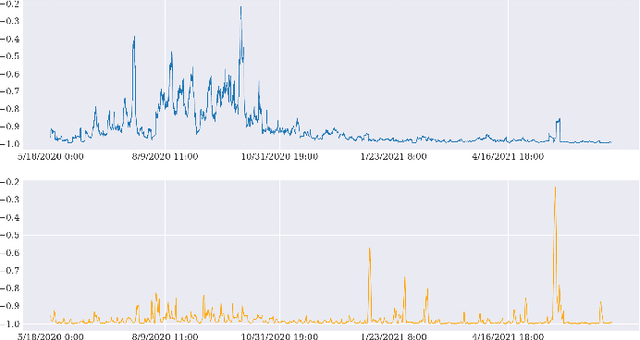
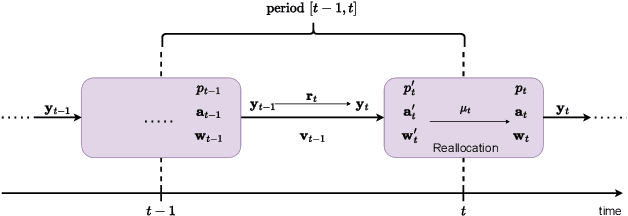
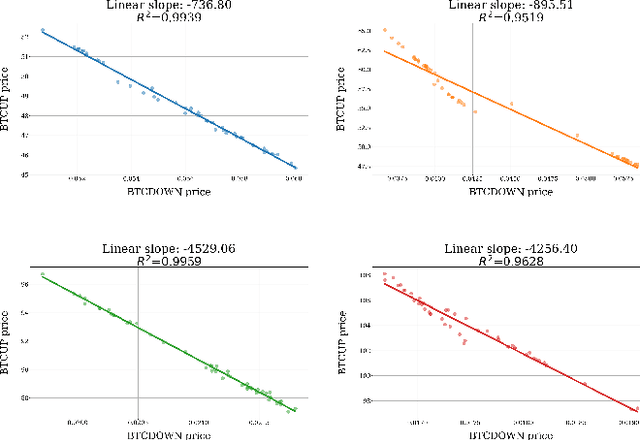
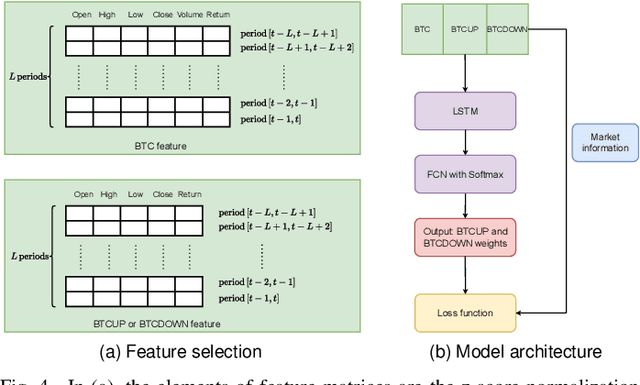
Abstract:Many cryptocurrency brokers nowadays offer a variety of derivative assets that allow traders to perform hedging or speculation. This paper proposes an effective algorithm based on neural networks to take advantage of these investment products. The proposed algorithm constructs a portfolio that contains a pair of negatively correlated assets. A deep neural network, which outputs the allocation weight of each asset at a time interval, is trained to maximize the Sharpe ratio. A novel loss term is proposed to regulate the network's bias towards a specific asset, thus enforcing the network to learn an allocation strategy that is close to a minimum variance strategy. Extensive experiments were conducted using data collected from Binance spanning 19 months to evaluate the effectiveness of our approach. The backtest results show that the proposed algorithm can produce neural networks that are able to make profits in different market situations.
Credit Card Fraud Detection with Subspace Learning-based One-Class Classification
Sep 26, 2023Abstract:In an increasingly digitalized commerce landscape, the proliferation of credit card fraud and the evolution of sophisticated fraudulent techniques have led to substantial financial losses. Automating credit card fraud detection is a viable way to accelerate detection, reducing response times and minimizing potential financial losses. However, addressing this challenge is complicated by the highly imbalanced nature of the datasets, where genuine transactions vastly outnumber fraudulent ones. Furthermore, the high number of dimensions within the feature set gives rise to the ``curse of dimensionality". In this paper, we investigate subspace learning-based approaches centered on One-Class Classification (OCC) algorithms, which excel in handling imbalanced data distributions and possess the capability to anticipate and counter the transactions carried out by yet-to-be-invented fraud techniques. The study highlights the potential of subspace learning-based OCC algorithms by investigating the limitations of current fraud detection strategies and the specific challenges of credit card fraud detection. These algorithms integrate subspace learning into the data description; hence, the models transform the data into a lower-dimensional subspace optimized for OCC. Through rigorous experimentation and analysis, the study validated that the proposed approach helps tackle the curse of dimensionality and the imbalanced nature of credit card data for automatic fraud detection to mitigate financial losses caused by fraudulent activities.
Forecasting Emergency Department Crowding with Advanced Machine Learning Models and Multivariable Input
Aug 31, 2023Abstract:Emergency department (ED) crowding is a significant threat to patient safety and it has been repeatedly associated with increased mortality. Forecasting future service demand has the potential patient outcomes. Despite active research on the subject, several gaps remain: 1) proposed forecasting models have become outdated due to quick influx of advanced machine learning models (ML), 2) amount of multivariable input data has been limited and 3) discrete performance metrics have been rarely reported. In this study, we document the performance of a set of advanced ML models in forecasting ED occupancy 24 hours ahead. We use electronic health record data from a large, combined ED with an extensive set of explanatory variables, including the availability of beds in catchment area hospitals, traffic data from local observation stations, weather variables, etc. We show that N-BEATS and LightGBM outpeform benchmarks with 11 % and 9 % respective improvements and that DeepAR predicts next day crowding with an AUC of 0.76 (95 % CI 0.69-0.84). To the best of our knowledge, this is the first study to document the superiority of LightGBM and N-BEATS over statistical benchmarks in the context of ED forecasting.
Optimum Output Long Short-Term Memory Cell for High-Frequency Trading Forecasting
Apr 20, 2023



Abstract:High-frequency trading requires fast data processing without information lags for precise stock price forecasting. This high-paced stock price forecasting is usually based on vectors that need to be treated as sequential and time-independent signals due to the time irregularities that are inherent in high-frequency trading. A well-documented and tested method that considers these time-irregularities is a type of recurrent neural network, named long short-term memory neural network. This type of neural network is formed based on cells that perform sequential and stale calculations via gates and states without knowing whether their order, within the cell, is optimal. In this paper, we propose a revised and real-time adjusted long short-term memory cell that selects the best gate or state as its final output. Our cell is running under a shallow topology, has a minimal look-back period, and is trained online. This revised cell achieves lower forecasting error compared to other recurrent neural networks for online high-frequency trading forecasting tasks such as the limit order book mid-price prediction as it has been tested on two high-liquid US and two less-liquid Nordic stocks.
Predicting the State of Synchronization of Financial Time Series using Cross Recurrence Plots
Nov 02, 2022Abstract:Cross-correlation analysis is a powerful tool for understanding the mutual dynamics of time series. This study introduces a new method for predicting the future state of synchronization of the dynamics of two financial time series. To this end, we use the cross-recurrence plot analysis as a nonlinear method for quantifying the multidimensional coupling in the time domain of two time series and for determining their state of synchronization. We adopt a deep learning framework for methodologically addressing the prediction of the synchronization state based on features extracted from dynamically sub-sampled cross-recurrence plots. We provide extensive experiments on several stocks, major constituents of the S\&P100 index, to empirically validate our approach. We find that the task of predicting the state of synchronization of two time series is in general rather difficult, but for certain pairs of stocks attainable with very satisfactory performance.
Augmented Bilinear Network for Incremental Multi-Stock Time-Series Classification
Jul 23, 2022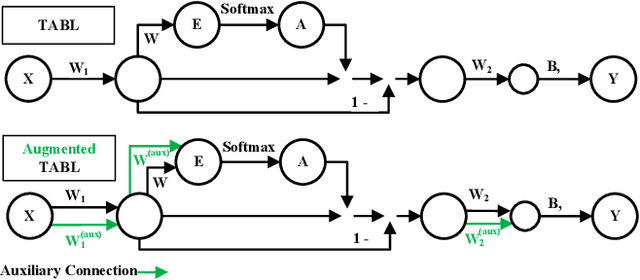

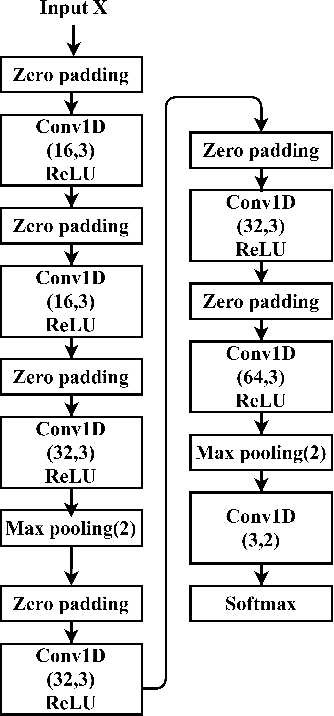
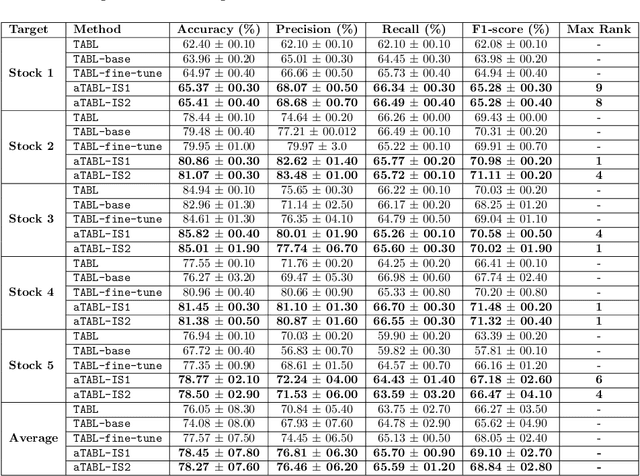
Abstract:Deep Learning models have become dominant in tackling financial time-series analysis problems, overturning conventional machine learning and statistical methods. Most often, a model trained for one market or security cannot be directly applied to another market or security due to differences inherent in the market conditions. In addition, as the market evolves through time, it is necessary to update the existing models or train new ones when new data is made available. This scenario, which is inherent in most financial forecasting applications, naturally raises the following research question: How to efficiently adapt a pre-trained model to a new set of data while retaining performance on the old data, especially when the old data is not accessible? In this paper, we propose a method to efficiently retain the knowledge available in a neural network pre-trained on a set of securities and adapt it to achieve high performance in new ones. In our method, the prior knowledge encoded in a pre-trained neural network is maintained by keeping existing connections fixed, and this knowledge is adjusted for the new securities by a set of augmented connections, which are optimized using the new data. The auxiliary connections are constrained to be of low rank. This not only allows us to rapidly optimize for the new task but also reduces the storage and run-time complexity during the deployment phase. The efficiency of our approach is empirically validated in the stock mid-price movement prediction problem using a large-scale limit order book dataset. Experimental results show that our approach enhances prediction performance as well as reduces the overall number of network parameters.
 Add to Chrome
Add to Chrome Add to Firefox
Add to Firefox Add to Edge
Add to Edge